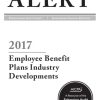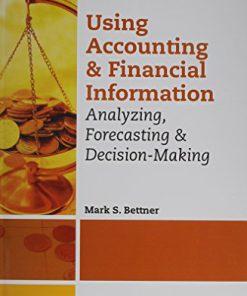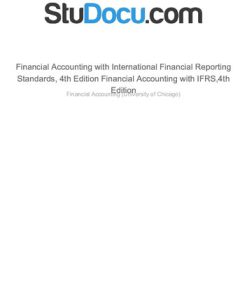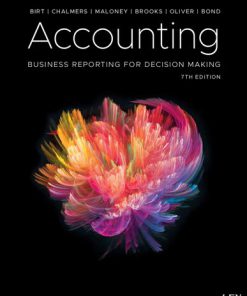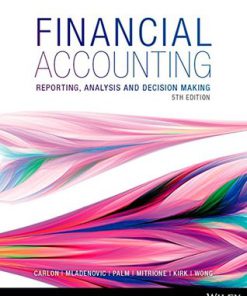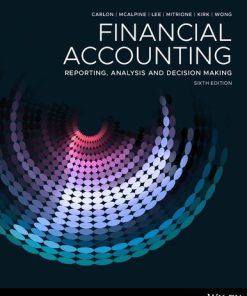Financial Accounting Tools for Business Decision Making 8th Edition by Paul Kimmel, Jerry Weygandt, Donald Kieso ISBN 1118953819 9781118953815
$50.00 Original price was: $50.00.$25.00Current price is: $25.00.
Financial Accounting Tools for Business Decision Making 8th Edition by Paul D. Kimmel, Jerry J. Weygandt, Donald E. Kieso – Ebook PDF Instant Download/Delivery: 1118953819, 9781118953815
Full download Financial Accounting Tools for Business Decision Making 8th Edition after payment
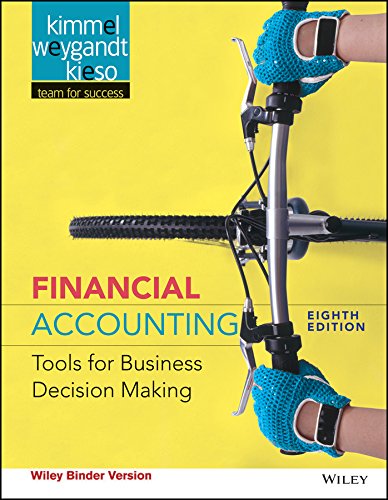
Product details:
ISBN 10: 1118953819
ISBN 13: 9781118953815
Author: Paul D. Kimmel, Jerry J. Weygandt, Donald E. Kieso
Starting with the big picture of financial statements first, Paul Kimmel shows students why financial accounting is important to their everyday lives, business majors, and future careers. This best-selling financial accounting program is known for a student-friendly writing style, visual pedagogy, the most relevant and easy to understand examples, and teaching the accounting cycle through the lens of one consistent story of Sierra Corp, an outdoor adventure company.
Financial Accounting Tools for Business Decision Making 8th Table of contents:
1 Introduction to Financial Statements
Knowing the Numbers
LO 1: Study the forms of business organization and the uses of accounting information.
Forms of Business Organization
Users and Uses of Financial Information
Ethics in Financial Reporting
LO 2: Explain the three principal types of business activity.
Financing Activities
Investing Activities
Operating Activities
LO 3: Describe the four financial statements and how they are prepared.
Income Statement
Retained Earnings Statement
Balance Sheet
Statement of Cash Flows
Interrelationships of Statements
Other Elements of an Annual Report
A Look at IFRS
2 A Further Look at Financial Statements
Just Fooling Around?
LO 1: Identity the sections of a classified balance sheet.
Current Assets
Long-Term Investments
Property, Plant, and Equipment
Intangible Assets
Current Liabilities
Long-Term Liabilities
Stockholders’ Equity
LO 2: Use ratios to evaluate a company’s profitability, liquidity, and solvency.
Ratio Analysis
Using the Income Statement
Using a Classified Balance Sheet
Using the Statement of Cash Flows
LO 3: Discuss financial reporting concepts.
The Standard-Setting Environment
Qualities of Useful Information
Assumptions in Financial Reporting
Principles in Financial Reporting
Cost Constraint
A Look at IFRS
3 The Accounting Information System
Accidents Happen
LO 1: Analyze the effect of business transactions on the basic accounting equation.
Accounting Transactions
Analyzing Transactions
Summary of Transactions
LO 2: Explain how accounts, debits, and credits are used to record business transactions.
Debits and Credits
Debit and Credit Procedures
Stockholders’ Equity Relationships
Summary of Debit/Credit Rules
LO 3: Indicate how a journal is used in the recording process.
The Recording Process
The Journal
LO 4: Explain how a ledger and posting help in the recording process.
The Ledger
Chart of Accounts
Posting
The Recording Process Illustrated
Summary Illustration of Journalizing and Posting
LO 5: Prepare a trial balance.
Limitations of a Trial Balance
A Look at IFRS
4 Accrual Accounting Concepts
Keeping Track of Groupons
LO 1: Explain the accrual basis of accounting and the reasons for adjusting entries.
The Revenue Recognition Principle
The Expense Recognition Principle
Accrual versus Cash Basis of Accounting
The Need for Adjusting Entries
Types of Adjusting Entries
LO 2: Prepare adjusting entries for deferrals.
Prepaid Expenses
Unearned Revenues
LO 3: Prepare adjusting entries for accruals.
Accrued Revenues
Accrued Expenses
Summary of Basic Relationships
LO 4: Prepare an adjusted trial balance and closing entries.
Preparing the Adjusted Trial Balance
Preparing Financial Statements
Quality of Earnings
Closing the Books
Summary of the Accounting Cycle
LO *5: APPENDIX 4A: Describe the purpose and the basic form of a worksheet.
A Look at IFRS
5 Merchandising Operations and the Multiple-Step Income Statement
Buy Now, Vote Later
LO 1: Describe merchandising operations and inventory systems.
Operating Cycles
Flow of Costs
LO 2: Record purchases under a perpetual inventory system.
Freight Costs
Purchase Returns and Allowances
Purchase Discounts
Summary of Purchasing Transactions
LO 3: Record sales under a perpetual inventory system.
Sales Returns and Allowances
Sales Discounts
LO 4: Prepare a multiple-step income statement and a comprehensive income statement.
Single-Step Income Statement
Multiple-Step Income Statement
Comprehensive Income Statement
LO 5: Determine cost of goods sold under a periodic inventory system.
LO 6: Compute and analyze gross profit rate and profit margin.
Gross Profit Rate
Profit Margin
LO *7: APPENDIX 5A: Record purchases and sales of inventory under a periodic inventory system.
Recording Merchandise Transactions
Recording Purchases of Merchandise
Freight Costs
Recording Sales of Merchandise
Comparison of Entries—Perpetual vs. Periodic
A Look at IFRS
6 Reporting and Analyzing Inventory
“Where Is That Spare Bulldozer Blade?”
LO 1: Discuss how to classify and determine inventory.
Classifying Inventory
Determining Inventory Quantities
LO 2: Apply inventory cost flow methods and discuss their financial effects.
Specific Identification
Cost Flow Assumptions
Financial Statement and Tax Effects of Cost Flow Methods
Using Inventory Cost Flow Methods Consistently
LO 3: Explain the statement presentation and analysis of inventory.
Presentation
Lower-of-Cost-or-Market
Analysis
Adjustments for LIFO Reserve
LO *4: APPENDIX 6A: Apply inventory cost flow methods to perpetual inventory records.
First-In, First-Out (FIFO)
Last-In, First-Out (LIFO)
Average-Cost
LO *5: APPENDIX 6B: Indicate the effects of inventory errors on the financial statements.
Income Statement Effects
Balance Sheet Effects
A Look at IFRS
7 Fraud, Internal Control, and Cash
Minding the Money in Madison
LO 1: Define fraud and the principles of internal control.
Fraud
The Sarbanes-Oxley Act
Internal Control
Principles of Internal Control Activities
Limitations of Internal Control
LO 2: Apply internal control principles to cash.
Cash Receipts Controls
Cash Disbursements Controls
LO 3: Apply the control features of a bank account.
Electronic Funds Transfer (EFT) System
Bank Statements
Reconciling the Bank Account
LO 4: Explain the reporting of cash and the basic principles of cash management.
Reporting Cash
Managing and Monitoring Cash
Cash Budgeting
LO *5: APPENDIX 7A: Explain the operation of a petty cash fund.
Establishing the Petty Cash Fund
Making Payments from Petty Cash
Replenishing the Petty Cash Fund
A Look at IFRS
8 Reporting and Analyzing Receivables
What’s Cooking?
LO 1: Explain how companies recognize accounts receivable.
Types of Receivables
Recognizing Accounts Receivable
LO 2: Describe how companies value accounts receivable and record their disposition.
Valuing Accounts Receivable
Disposing of Accounts Receivable
LO 3: Explain how companies recognize, value, and dispose of notes receivable.
Determining the Maturity Date
Computing Interest
Recognizing Notes Receivable
Valuing Notes Receivable
Disposing of Notes Receivable
LO 4: Describe the statement presentation of receivables and the principles of receivables managemen
Financial Statement Presentation of Receivables
Managing Receivables
Evaluating Liquidity of Receivables
Accelerating Cash Receipts
A Look at IFRS
9 Reporting and Analyzing Long-Lived Assets
A Tale of Two Airlines
LO 1: Explain the accounting for plant asset expenditures.
Determining the Cost of Plant Assets
Expenditures During Useful Life
To Buy or Lease?
LO 2: Apply depreciation methods to plant assets.
Factors in Computing Depreciation
Depreciation Methods
Revising Periodic Depreciation
Impairments
LO 3: Explain how to account for the disposal of plant assets.
Sale of Plant Assets
Retirement of Plant Assets
LO 4: Identity the basic issues related to reporting intangible assets.
Accounting for Intangible Assets
Types of Intangible Assets
LO 5: Discuss how long-lived assets are reported and analyzed.
Presentation
Analysis
LO *6: APPENDIX 9A: Compute periodic depreciation using the declining-balance method and the units-o
Declining-Balance Method
Units-of-Activity Method
A Look at IFRS
10 Reporting and Analyzing Liabilities
And Then There Were Two
LO 1: Explain how to account for current liabilities.
What Is a Current Liability?
Notes Payable
Sales Taxes Payable
Unearned Revenues
Current Maturities of Long-Term Debt
Payroll and Payroll Taxes Payable
LO 2: Describe the major characteristics of bonds.
Types of Bonds
Issuing Procedures
Determining the Market Price of Bonds
LO 3: Explain how to account for bond transactions.
Issuing Bonds at Face Value
Discount or Premium on Bonds
Issuing Bonds at a Discount
Issuing Bonds at a Premium
Redeeming Bonds at Maturity
Redeeming Bonds before Maturity
LO 4: Discuss how liabilities are reported and analyzed.
Presentation
Analysis
LO *5: APPENDIX 10A: Apply the straight-line method of amortizing bond discount and bond premium.
Amortizing Bond Discount
Amortizing Bond Premium
LO *6: APPENDIX 10B: Apply the effective-interest method of amortizing bond discount and bond premiu
Amortizing Bond Discount
Amortizing Bond Premium
LO *7: APPENDIX 10C: Describe the accounting for long-term notes payable.
A Look at IFRS
11 Reporting and Analyzing Stockholders’ Equity
Oh Well, I Guess I’ll Get Rich
LO 1: Discuss the major characteristics of a corporation.
Characteristics of a Corporation
Forming a Corporation
Stockholder Rights
Stock Issue Considerations
Corporate Capital
LO 2: Explain how to account for the issuance of common and preferred stock, and the purchase of tre
Accounting for Common Stock
Accounting for Preferred Stock
Treasury Stock
LO 3: Explain how to account for cash dividends and describe the effect of stock dividends and stock
Cash Dividends
Dividend Preferences
Stock Dividends
Stock Splits
LO 4: Discuss how stockholders’ equity is reported and analyzed.
Retained Earnings
Retained Earnings Restrictions
Balance Sheet Presentation of Stockholders’ Equity
Analysis of Stockholders’ Equity
Debt versus Equity Decision
LO *5: APPENDIX 11A: Prepare entries for stock dividends.
A Look at IFRS
12 Statement of Cash Flows
Got Cash?
LO 1: Discuss the usefulness and format of the statement of cash flows.
Usefulness of the Statement of Cash Flows
Classification of Cash Flows
Significant Noncash Activities
Format of the Statement of Cash Flows
LO 2: Prepare a statement of cash flows using the indirect method.
Indirect and Direct Methods
Indirect Method—Computer Services Company
Step 1: Operating Activities
Summary of Conversion to Net Cash Provided by Operating Activities– Indirect Method
Step 2: Investing and Financing Activities
Step 3: Net Change in Cash
LO 3: Use the statement of cash flows to evaluate a company.
The Corporate Life Cycle
Free Cash Flow
LO *4: APPENDIX 12A: Prepare a statement of cash flows using the direct method.
Step 1: Operating Activities
Step 2: Investing and Financing Activities
Step 3: Net Change in Cash
LO *5: APPENDIX 12B: Use the T-account approach to prepare a statement of cash flows.
A Look at IFRS
13 Financial Analysis: The Big Picture
It Pays to Be Patient
LO 1: Apply the concept of sustainable income and quality of earnings.
Sustainable Income
Quality of Earnings
LO 2: Apply horizontal analysis and vertical analysis.
Horizontal Analysis
Vertical Analysis
LO 3: Analyze a company’s performance using ratio analysis.
Price-Earnings Ratio
Liquidity Ratios
Solvency Ratios
Profitability Ratios
LO *4: APPENDIX 13A: Evaluate a company comprehensively using ratio analysis.
Liquidity Ratios
Solvency Ratios
Profitability Ratios
A Look at IFRS
A Specimen Financial Statements: Apple Inc.
B Specimen Financial Statements: Columbia Sportswear Company
C Specimen Financial Statements: VF Corporation
D Specimen Financial Statements: Amazon.com, Inc.
E Specimen Financial Statements: Wal-Mart Stores, Inc.
F Specimen Financial Statements: Louis Vuitton
G Time Value of Money
LO 1: Compute interest and future values.
Nature of Interest
Future Value of a Single Amount
Future Value of an Annuity
LO 2: Compute present values.
Present Value Variables
Present Value of a Single Amount
Present Value of an Annuity
Time Periods and Discounting
Present Value of a Long-Term Note or Bond
LO 3: Use a financial calculator to solve time value of money problems.
Present Value of a Single Sum
Present Value of an Annuity
Useful Applications of the Financial Calculator
H Reporting and Analyzing Investments
LO 1: Explain how to account for debt investments.
Why Corporations Invest
Accounting for Debt Investments
LO 2: Explain how to account for stock investments.
Holdings of Less than 20%
Holdings Between 20% and 50%
Holdings of More than 50%
LO 3: Discuss how debt and stock investments are reported in the financial statements.
Categories of Securities
Balance Sheet Presentation
Presentation of Realized and Unrealized Gain or Loss
Statement of Cash Flows Presentation
People also search for Financial Accounting Tools for Business Decision Making 8th:
financial accounting, binder ready version tools business
binder ready version
financial planner binder
financial planning binder
binder accounting
Tags:
Paul Kimmel,Jerry Weygandt,Donald Kieso,Financial Accounting,Tools,Business,Decision
You may also like…
Business & Economics - Management & Leadership
Managerial Accounting: The Cornerstone of Business Decision-Making 7th Edition Maryanne M. Mowen
Business & Economics - Accounting
Business & Economics - Accounting
Business & Economics - Accounting
Accounting: Business Reporting for Decision Making (Sixth Edition) Jacqueline Birt
Business & Economics
Accounting: Business Reporting for Decision Making (Seventh Edition) Jacqueline Birt
Business & Economics
Financial Accounting: Reporting, Analysis and Decision Making 5E Shirley Carlon
Business & Economics - Accounting
Financial Accounting: Reporting, Analysis and Decision Making 6E 6th Edition Shirley Carlon


